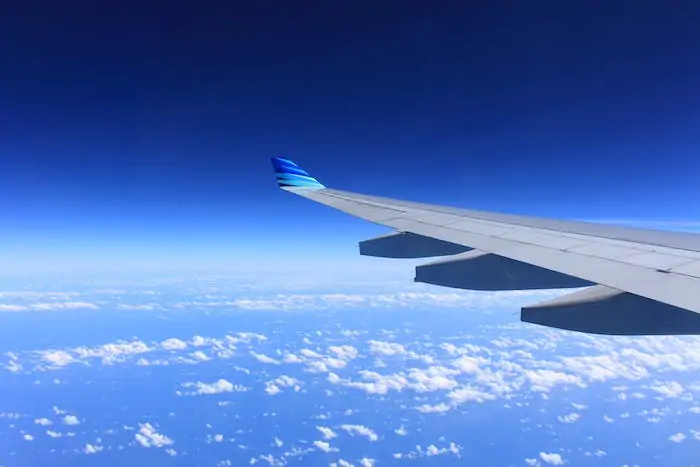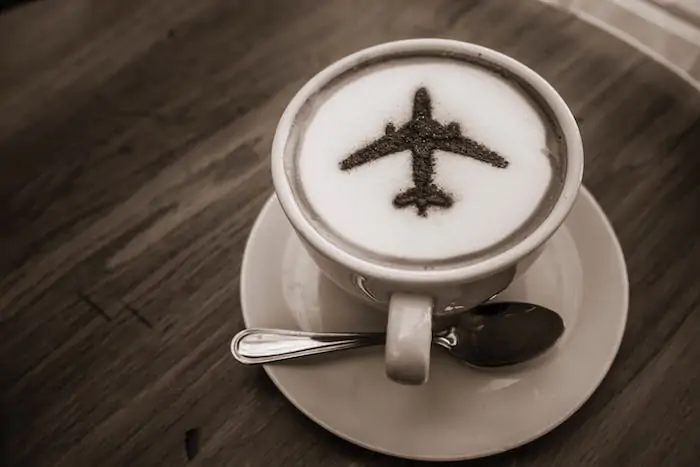What are the regulations concerning carrying food on a flight? Do they differ from one state to another? So, can you bring coffee beans on a plane? Read on to find out more.

Coffee beans can differ in terms of aroma, flavor, and even taste depending on the state or region where they are grown. As such, it is normal to want to carry some grounds for your coffee fix when traveling away from your home. In that case, you may face the dilemma of whether coffee beans are allowed on the flight.
Can you bring coffee beans on a plane? Yes, you can. Coffee beans can be carried into a plane as either carry-on baggage or checked luggage.
The difference between how you transport your beans lies in their weight. Heavier coffee beans should be transported among the checked luggage while else lightweight coffee can remain in your handbag during the travel. However, different airports and countries have different rules concerning transporting food.
This article will look at how to carry coffee beans in a plane, how to declare your food at the customs, the conditions of carrying liquid coffee and a coffee maker into a flight, specific customer regulations on coffee for different countries, and other customs coffee-related questions.
How To Carry Coffee Beans In A Plane
To start, if you are looking to carry your favorite hot drink beans, you should consider coffee beans in the original packaging. This is because the Travelling Security Administration (TSA) tends to not inspect food in their retailing package as compared to those that have been repackaged.
However, if you have to carry beans in official packaging, it is recommended you place them, in a resalable bag to allow inspections according to TSA rules. The resalable bag or container should preferably be airtight to extend the shelf life of the coffee beans.
Besides, TSA officers may instruct travelers to declutter their carry-on baggage and separate items such as food from other materials. This makes the screening process of the carry-on bags easier, which means that the lines at the airport will move. Usually, if the carry-on bag is cluttered the different items may distract the x-ray machine conducting the screening.
As mentioned above, different countries may have different boundary rules concerning transporting food of any kind via planes. This necessitates the need to declare your food, in this case, coffee, when you land to your destination. Moreover, the TSA is only responsible for safety during the fight and not when you land. The moment you are on land the Custom Border Protection (CBP) takes over.
As such, their rules may differ from those of TSA. Therefore, declare your coffee when traveling to a new country whether it allowable or not. I cannot emphasize this enough.
How To Declare Your Coffee At The Customs
The primary step of declaring your food including coffee is through filling the custom Declaration form. This form provides information about who you are and what you are carrying into your destination.
The form emphasizes listing any agricultural or wildlife commodities you are carrying. According to the CBP rules, it is very important to list any food or agricultural produce that you have. This helps the CBP officers to be notified earlier and the food or coffee is then screened to ascertain it is free of pests and diseases.
The USA government argues that even the smallest pest or disease can cause severe damage to the state of agriculture in the country if the food is allowed in without being screened first
However, declaring your food does not stop at the customs form. In some cases, you may have to go the extra mile and talk to a customs officer.
The customer officer may want to know if the coffee is for commercial purposes or personal use. If the coffee is for commercial use, you may be required to file a declaration and pay duties. Although the process of talking to a customs officer may be long, it very helpful in avoid unnecessary confusion.
So, what would happen if you fail to declare your coffee? Well for starters it could result in heavy fining. According to CBP, the fine of not declaring your food coffee can go as high as 10,000 dollars.
Also, not declaring your coffee can be expensive in terms of the hours you may have to be retained in the airport before you get cleared. Why risk when you can just declare your coffee and enjoy a smooth flight experience.
Carrying your coffee or food along in your flight can hardly pose danger to others, however, some people use such opportunities to hide illegal stuff. Therefore, if the officers in charge need to inspect your coffee be flexible enough and allow them to do their job.
Taking Liquid Coffee To A Plane

Plane coffee can sometimes be dire; this necessitates the need to carry your liquid coffee into a plane. So, is carrying liquid coffee onboard allowed? The good news is yes, it is allowed and you have the freedom of enjoying your drink when traveling the world.
However, there are conditions to it; firstly, the liquid rule requires that you can only carry a maximum of 100 ml of any liquid including coffee. The coffee should be in a stable, sealable container that assures the security of other passengers especially if it is hot.
Typically, the TSA officers may not have any concerns concerning your coffee or any other drink bought after the security protocol.
To minimize the dangers of carrying hot coffee you may opt for iced coffee such as Frappuccino or frappes depending on your choice.
What About Carrying Coffee Making Machines Into Planes
There are no special regulations when it comes to carrying your coffee maker. Did you know you can carry your coffee maker in your hand pack or checked luggage? Your only concern should be the size of the coffee maker. Beyond that, it is treated like any other luggage.
Looking at the size, most airlines only allow a maximum of 5-6 kilograms of carry-on in luggage. The smallest coffee maker can weigh up to 2.5 5-6 kilograms. It is recommended that you pack your coffee maker as checked luggage.
Other than the weight, if your coffee maker has removable blades then you may have to carry it as checked luggage. This is emphasized as a security requirement for the safety of other passengers. Moreover, before packing your coffee maker, make sure you empty it to ensure there are no issues related to the liquid rule.
Specific Custom Regulations For Coffee In Different Countries
The conditions highlighted in this article apply to both domestic and international flights. However, the customs regulations for coffee and other food differ especially between EU countries and non- EU countries. The following are some specifications for non- EU countries
- Turkey allows you to import only 1 kilogram of (instant) coffee and 500 grams of tea.
- In Switzerland, there is no limit to the amount of coffee you are allowed to carry as long as it is within the custom free luggage weight requirement. Therefore, to my coffee junkie gang, here is a country you may want to add to your travel list without worrying about leaving behind your hot brew.
For EU countries, on the other hand, you can carry up to a maximum of 10 5-6 kilograms of coffee, as long as it fits in the duty-free luggage. This applies to all types of coffee except liquid coffee and for countries with specifications about powdered coffee.
Related Questions
Are the rules different for carrying grounded coffee on a plane?
If you are looking to carry your powder or soluble coffee, the conditions of carrying coffee beans differ slightly from those of coffee powder.
First, powdered or grounded coffee is subject to the TSA powder rule. Similarly, there is a regulated amount of grounded coffee, which one is allowed to carry. Beyond 12 Oz you may have to say goodbye to your coffee if the TSA officers do not approve of it.
Different countries have different requirements when it comes to transporting any powder food or material. The USA, for instance, enforced the powder rule in 2018. The rule requires that powdered substances, including coffee, can only be carried in a carry-on bag and in regulated amounts, that is 350ml.
What happens if you exceed 350 ml of coffee?
In case your coffee exceeds the 350ml requirement, the TSA officers may have to inspect it and approve that it is real coffee. If they do not approve of it being coffee, then you may have to part with it. Therefore, if you wish to keep in contact with your favorite drink, it is recommended you transport your coffee within the specified limits.
Also, this rule applies to all powder stuff, including other spices, makeup, hair products name it. The only powdered products that can be allowed in excess amounts are medicine, baby food including milk powder and urn contents.
In which countries can I find coffee at cheaper prices?
As you prepare to travel, you may want to evaluate the cost of carrying 350ml of coffee and buying the coffee at your destination.
So, one of the countries with the cheapest coffee is Brazil. It has one of the cheapest coffee served in most restaurants. On the other hand, Switzerland is among the top five cities with the most expensive coffee, it stands at number 4. Coffee in Switzerland goes for 2.92 Euros.
